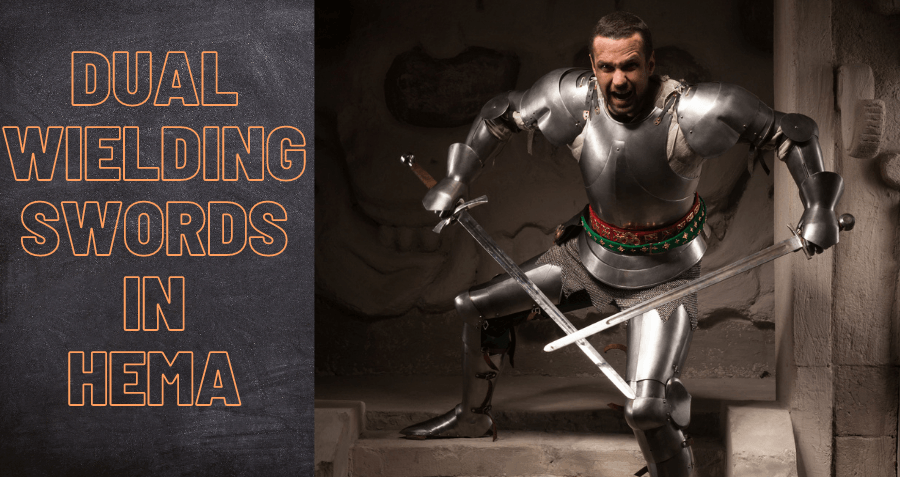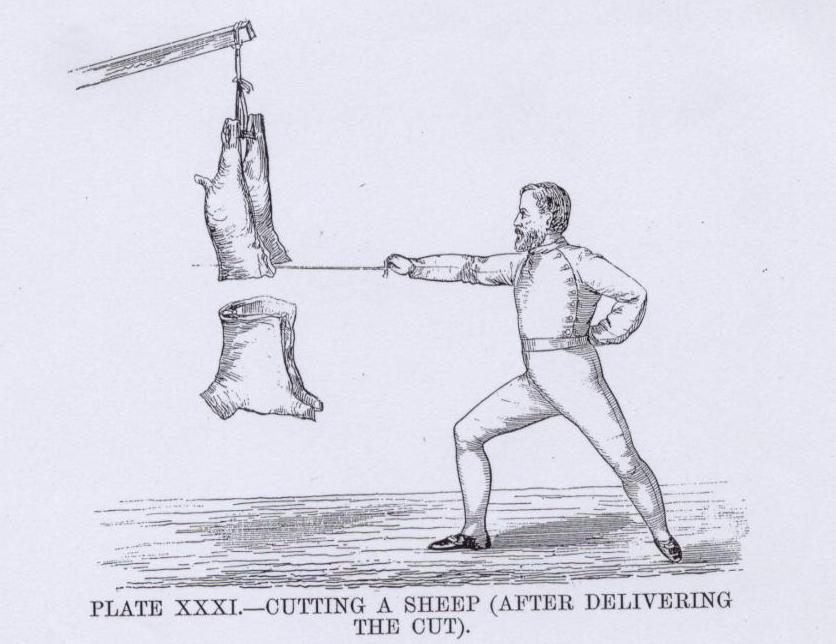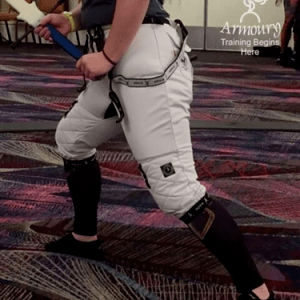Before the invention of guns and the modern artillery, the proverbial man lived and died by the sword. People used swords to build societies, protect their homes and even display craftsmanship and artistry. This was true in most cultures throughout the world, but Japan and Europe were specifically known for their elaborate swords as well as the talent of the men and women who used them, commonly known as the swordsman. Who were these people who made and used these swords? And what is it that makes these swords and the people behind them so fascinating still today?
Those people were swordsmen.
Learning to Be a Swordsman Historically
As swords became more popular as a weapon people needed to get better and better at their fighting skills using them, as well as defending against someone else who used a sword in battle. The art of fencing, or fighting with swords involves foresight, agility, precision, confidence, training, and even a little bit of luck. During the classical period of history ancient warriors engaged in many martial arts, including forms of sword fighting. Ancient swordsmen would spend their entire lives learning the fighting skills on how to handle a sword. These people would become the stuff of legends and tall tales throughout the local area, and even today we remember a few of them as near mythical figures for their skill with the blade. However, it took a lot of work to gain this amount of skill. Some people learned to become a swordsman by themselves in solo training, while others actually went to special schools to learn how to sword fight from experienced instructors.
In Europe fencing manuals were written at least as far back as the 1300s, an example being the Royal Armouries Ms. I.33 manuscript that showcases a method of sword and buckler fighting.
We also know that traveling sword masters such as Fiore de Liberi lived in the 1400s, who had occupations training knights for duels of honor. Fiore’s art is known to us today as Armizare within the Historical European martial arts community, and his method of fighting with the long sword is widely studied.
We also know that during the 1600s some swordsman were trained as members of guilds. Famously the Brotherhood of Saint Mark (Marxbrüder), was a fencing guild that taught the teaching of swordsmanship in the Holy Roman Empire from 1487 until 1570. The Brotherhood of Saint Mark is associated with the sword fighting style Kunst des Fechtens (German: The Art of Fencing), which is also called the Liechtenauer tradition within the HEMA community.
Later, during the 1600s the famed fencing teacher Achille Marozzo opened a famous school for swordsmanship training, as did many later generations of sword masters. Fencing schools existed in Europe for centuries, teaching swordsmanship and eventually fencing became a subject taught at universities and boarding schools, too.
Not everyone had the luxury of going to school that taught swordsmanship. There were also swordsmen who learned their skill by walking through their own path in life. Many young men would leave home for a life of mercenary or piracy work, with nothing but the clothes on their back and a blade. Despite no formal training other than what they learned from other experienced swordsmen they worked with, the best non-formally trained swordsmen practiced often and showed dedicated. Yet few were more devoted to the craft than the famous Japanese samurai.
Samurai were notoriously disciplined. Starting in childhood, samurai trained physically and studied strategy every day. Not only were samurai disciplined in regards to practicing their skill, but they were also disciplined morally. They all followed a stern guide for moral belief called “The Way of the Warrior” or Bushido. They were also trained to follow Zen Buddhist and Shinto ideals. They even learned poetry and art. Of course, it was their swordsmanship that made them legends. One of the most famous of the samurai known today is Miyamoto Musashi, who lived in the 16th and 17th centuries. He spent most of his adult life as a ronin, a wandering swordsman similar to a knight-errant from European folk tales. As a ronin Musashi engaged in numerous famous duels, winning every time even when he was outnumbered by groups of enemies. There are many stories and legends attributed to him and he is known as the saint of swords in Japan. Before his death he authored authored The Book of Five Rings (Go Rin No Sho), and Dokkōdō (The Path of Aloneness), and founded the unique martial art style of Niten Ichi-ryū.
Different Types of Swords Used by A Swordsman
Different types of swords that would be used by a swordsman include but are not limited to:
- European longsword
- Chinese jian
- Roman spatha
- English broadsword
- Italian or Spanish rapier
- English backsword
- Japanese katana
- Napoleonic sabre
Each different sword types all have their own strengths and uses. You can learn about the different study of European swordsmanship weapons on our Learn HEMA Weapons section of this site.
Golden Era of the Blade
Swords began to appear throughout different cultures starting in the 16th B.C. century until modern times, each with their own unique look and style. After the Turkish weapon mentioned above, the Chinese broadsword and the Trojan sword were made. More and more different cultures crank out new swords for years to come. However, there was a period in time when everyone had steel on their side. This golden era lasted from about the 14th century to the 17th century.
During this time, numerous new types of swords were developed, and people were using them in war and even personal tussles. Some of the swords that emerged during this time include:
- katana
- ninja
- bastard
- great swords such as montante and zweihänders (mistakenly called claymores by some)
- rapier
- palach
- cutlass
Many of these are the types of swords that we think of when we think of swords in modern media such as films, comics, books and video games. Indeed, people were taking their swords to war on land and on sea. Duels were a popular way to end a dispute between parties. Even people who didn’t actually use their swords owned one. People started to take real pride in their swords instead of seeing them as merely a weapon, with many becoming more decorative and fashion symbols as time marched on. Swords started to become a piece of art as much as a functional weapon, and they reflected their owners’ status in society.
Creation of the Sword
People in the Middle Ages wanted swords. That means that people had to make these swords. These people were blacksmiths, or more particularly, sword smiths or cultiers who specialized in making bladed cutlery items like swords and knives. Every village had at least one smith who was there to make weapons, and other steel items, for the townspeople. It was a necessary part of the community. Most smiths of this type made standard weapons. However, some smiths got creative and started making swords that could be considered a piece of art. whether you wanted something that was sharp enough to cut a man in two or something to show off your status, certain smiths became known for their amazing swords. True swordsmen would travel to get a good weapon instead of buying from the same smith as everyone else. Naturally, the better swords would cost a significant amount of money. This meant that some people weren’t able to afford a quality weapon.
There were swords that were made to be used, and there were swords that were made to be decorative. The two types of swords are made differently since the end goal is different. Swords made to be used would be made with the strongest materials despite what they look like. It would also be made practically, meaning it would be easy to hold and fight with. Extra weight just for decoration would only hinder the user. On the other hand, decorative swords can be as heavy as they need to be since it will be on display. Extra jewels are encouraged. Also, the shape of the weapon may not necessarily be the best shape for the fighter in the case of a real fight. It also doesn’t matter if the handle doesn’t offer the best grip.
One of the best swordsmiths in Japan during the 13th and 14th centuries was Gorō Nyūdō Masamune. This swordsmith is known for his unique style that involves embellishments known as suguha and notare hamon. There are only a few of his swords still around today. One of them is a Masamune passed down from leader to leader in Japan.
Being a Swordsman Today
Many people believe that swords are simply relics of the past, but they are relevant today as well. We get to look into the past when we study swords. They also make great decorations, so many people own a sword that hangs on a wall, even if they don’t know much about how to use it. But swords can still work as a good weapon when necessary. Regardless of the time period swords are always dangerous and people should know how to use one if they are going to own one. It was with this belief in mind that people started reconstructing the lost martial traditions of European swordsmanship and has led to the rise of the modern Historical European martial arts movement, which our website is focused on showcasing and teaching people about.
Today swordsmen exist who have obtained high levels of skill with a wide variety of sword types, reconstructing once forgotten martial traditions from surviving martial art manuals that teach their styles. So even in today’s world swordsmen still exist.
Swords helped build the world we see in front of us today. Even though we have newer weapons that are more effective now and the sword is retired as a battlefield weapon, there’s a reason swords were the weapon of choice for thousands of years. We hope you’ll read through our website and learn why.
****
If you’d like to learn more information about historical fencing practices please check out our Learn HEMA page for a guide to learning about the historical weapon that interests you. You can also find more guides we’ve written about other topics at our Helpful Guides page.
Related posts:
- Which Martial Arts Use Swords? A List of Martial Arts to Learn Sword Fighting
- German Long Sword Fighting Techniques in HEMA
- The Early History and Development of Modern Weight Lifting
- Why the History Channel TV Series Forged In Fire Is a Bad Representative of Historical Swordsmanship and Blade Forging




















